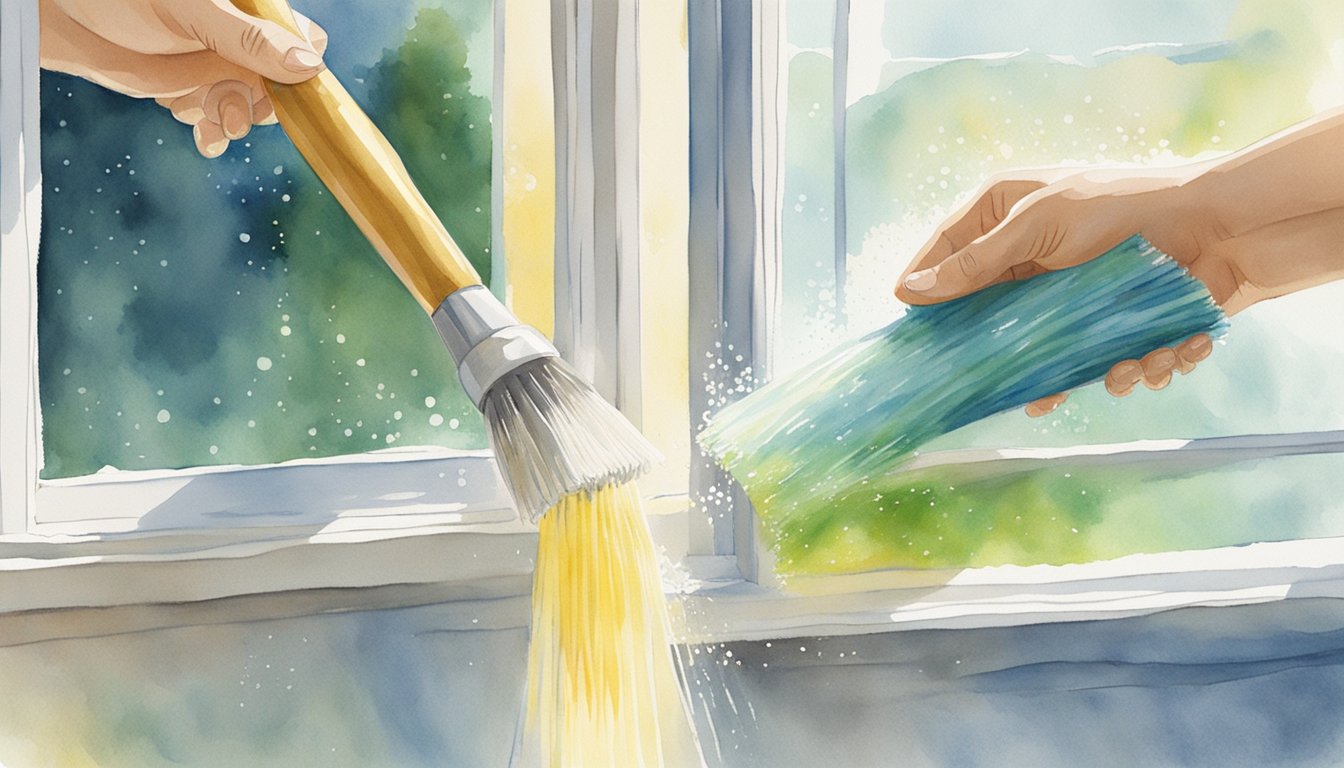Call us: (631) 270 9692
Cleaning window screens is essential for maintaining clear views, improving air quality, and maximizing natural light in our homes. When we let dust and dirt build up on our screens, it not only obstructs our view but also affects how fresh the air feels indoors. By regularly cleaning our window screens, we ensure that our homes stay bright and welcoming.
To clean window screens effectively, we need a few basic tools: a hose, a bucket, a scrubbing brush, and a mild soap solution. Removing the screens and washing them thoroughly helps get rid of the grime that accumulates over time. For those who prefer not to remove the screens, there are quick and easy methods available, such as using a spray bottle solution.
Regular maintenance of our window screens preserves their condition and extends their lifespan. Whether using soap and water or a homemade cleaning mix, the process is simple and rewarding. Keeping up with this routine means we can enjoy clearer windows and a healthier living environment all year round.
Preparing for Cleaning
Before we start cleaning our window screens, we need to ensure that we have all the necessary tools and that we follow some essential safety steps. Taking precautions now will save time and effort later.
Safety and Removal
Safety should be our top priority. Begin by wearing rubber gloves to protect our hands from any sharp edges or cleaning chemicals. Make sure to wear clothes that we don’t mind getting dirty.
To remove the window screens, we need to carefully unlock the latches that hold the screens in place. It’s important to handle the screens gently to avoid bending or damaging them. Depending on the window type, screens can be pushed out from the inside or popped out from the outside.
After removal, we place the screens on a clean, flat surface. This space can be a large table or even the ground if we lay down a protective layer. Ensuring they are flat prevents any accidental tears or bends.
Gathering Materials
Gathering all our cleaning materials in one place before starting will make the process smoother. Here’s what we need:
- A hose or a bucket of water
- Gentle dish soap
- A soft bristle brush
- A vacuum cleaner with a brush attachment for dust
- Clean, dry towels
We should also get a large bucket and mix warm water with a few drops of dish soap. This solution will help break down any dirt and grime on the screens.
Using a vacuum cleaner with a brush attachment, we can start by removing loose dust and debris. This step is crucial as it prevents the dirt from turning into stubborn grime when wet.
By having everything ready, we ensure a quick and efficient cleaning process.
The Cleaning Process
Cleaning window screens requires some steps to ensure they’re free from dust and grime. We’ll start by dusting and washing the screens, followed by rinsing and drying them.
Dusting and Washing
First, we need to remove loose dust from the screens. Using a vacuum with a brush attachment makes this easy. We gently run the vacuum over both sides of the screen to pick up dust and debris. For screens that are fixed, a handheld portable vacuum can be effective.
Next, we fill a bucket with warm water and add a few drops of gentle dish soap, creating a soapy solution. With a soft bristle brush, we lightly scrub the screen in circular motions to avoid damaging the mesh. This helps break down any stubborn dirt. If your screens are extremely dirty, you might need to repeat this step for better results.
Rinsing and Drying
After washing, it’s important to rinse the screens thoroughly to remove any soap residue. We use a garden hose to rinse, starting at the top and working our way down to cover the entire screen. If the screens are removable, we flip them and repeat the rinsing process on the other side.
Finally, we let the screens air dry completely to prevent mildew and ensure they’re completely clean. Placing them in a clean area with good airflow helps speed up the drying process. For fixed screens, wiping them with a clean, dry cloth can also be effective. This ensures our window screens look as good as new and ready to go back on the windows.
Aftercare and Maintenance

Properly maintaining our window screens ensures they remain clean and functional for years. This involves regular upkeep and addressing any issues that may arise.
Regular Maintenance Tips
Keeping window screens in good shape requires periodic cleaning and inspections. We should start by gently brushing off any loose dirt or debris with a soft brush. Monthly checks for tears or holes are crucial for preventing bugs and dirt from entering our homes.
We can use a mix of warm water and mild dish soap or ammonia to clean the screens. Make sure to rinse off any soap residue thoroughly with fresh water and let the screens air dry before reinstalling them. When reinstalling, we should check that the screens fit snugly in their frames to keep them secure.
Troubleshooting Common Issues
Sometimes, window screens may develop problems such as small tears, loose frames, or rust. For minor tears, we can use a DIY repair kit, which typically includes adhesive patches. If the damage is extensive, screen replacement might be necessary for the best results.
Rust can form over time, especially in humid areas. To address this, we can use white vinegar to treat rust spots. Pour vinegar over the rusted areas, let it sit for a couple hours, then scrub gently with a brush. Regularly inspecting the frames for loose fittings is also a good practice. If frames are loose, tightening or replacing them will keep the screens in place and functional.
By following these steps, we can prolong the life of our window screens and keep them looking and working like new.





